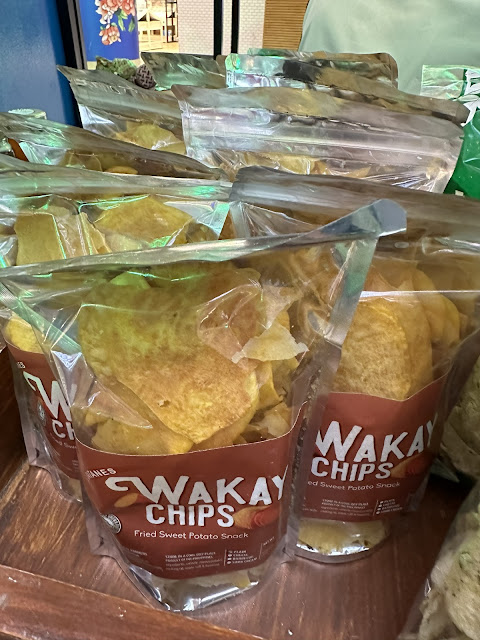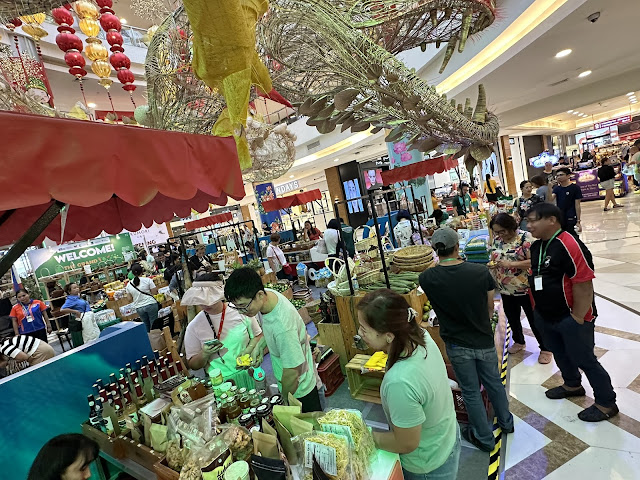Blogging
in the Philippines remains a dynamic and evolving field in 2025, shaped by technological
changes, consumer behavior, and digital marketing strategies.
Here's a comprehensive look at its current state:
Overview
of Blogging in the Philippines (2025)
📱Shift from Traditional Blogs to
Multi-Platform Content: Classic blogging (text-based, hosted on WordPress or
Blogger) is no longer the dominant format. Content creators now favor multimedia
platforms like YouTube, TikTok, Instagram, and Facebook Reels, though many
still maintain personal blogs for in-depth content or SEO purposes. Blogging
has increasingly merged with vlogging, podcasting, and short-form video content.
🧑💻Top Niches for Filipino
Bloggers
These
areas remain the most popular and profitable: (1) Lifestyle (daily routines,
family life, productivity tips); (2) Food and Travel (local explorations,
hidden gems, food reviews); (3) Beauty and Fashion (product reviews, trends,
local brands); (4) Technology and Gaming (gadgets, app reviews, gaming culture);
and (5) Finance and Freelancing (budgeting tips, online income sources, remote
work).
💰Monetization and Brand Collaborations. Filipino
bloggers earn through ads, sponsored content, affiliate marketing, digital
products, and brand partnerships. Influencer platforms like Blogapalooza, Raket.ph,
and Nuffnang connect bloggers with businesses. Even micro-influencers (with
1k–10k followers) can earn with highly engaged niche audiences.
📉 Challenges in 2025: (1) Oversaturation.
With thousands of content creators, standing out is harder than ever; (2) Algorithm
dependency. Platforms like Facebook and TikTok change algorithms frequently,
affecting reach; (3) Misinformation and regulation. Some creators face scrutiny
over ethical content, fake news, and sponsored posts disclosure; and (4) Monetization
fatigue. Brands are more selective, and influencers must show real value and
authenticity.
📈 Emerging Trends. (1) AI tools for
writing, scheduling, analytics, and personalization are becoming mainstream (2)
Sustainability and social advocacy are key themes; creators who support
environmental or social causes are in demand; (3) Local language content
(Tagalog, Bisaya, Ilocano, etc.) is growing in popularity as bloggers tap into
regional markets; and (4) Community-focused blogging: Bloggers now build
Discord groups, mailing lists, and exclusive membership sites (e.g., via
Patreon or Ko-fi).
Education
and Training. More universities and private groups are offering workshops and
certifications on blogging, digital marketing, and influencer branding. Events
like iBlog (formerly at UP Diliman) and Blogapalooza have shifted focus to
influencer marketing and creator education.
Blogging
in the Philippines is no longer just about long-form writing—it's a
multifaceted creator economy. Whether you're a hobbyist, journalist, or
aspiring influencer, there's still space to grow by carving out a unique niche,
producing quality content, and staying connected with your audience.
Blogging
landscape evolution. As of 2025, the Philippine blogging landscape continues to
evolve, reflecting shifts in digital consumption, influencer marketing, and
content creation. Here's an overview of the current state:
📉 Decline in Traditional Blogging and
Micro-Blogging. Recent data indicates a decrease in the use of social media
platforms for brand research among Filipinos. Specifically, micro-blogging
platforms like X (formerly Twitter) have seen a 26.2% drop in usage for this
purpose, while vlogs experienced a 23.8% decline . This trend suggests a shift
in how audiences engage with content and discover new brands.
📈 Rise of Niche Blogging and
Micro-Influencers. In response to changing audience behaviors, there's a
growing emphasis on niche blogging and the emergence of micro and nano
influencers. These content creators focus on specific topics, allowing them to
build dedicated and engaged communities. Brands are increasingly collaborating
with these influencers to reach targeted audiences authentically .
🤖 Integration of AI and Emphasis on
Sustainability.
Filipino
digital influencers are adopting artificial intelligence (AI) tools to enhance
content creation, optimize search engine visibility, and personalize user
experiences. Additionally, there's a notable shift towards promoting
sustainability and social responsibility. Many influencers are aligning their
content with environmental values, reflecting the growing consumer demand for
ethical practices .
The
Philippine blogging scene in 2025 is characterized by a shift towards niche
content, the rise of micro-influencers, and the integration of AI tools. While
traditional blogging faces challenges, the adaptability and innovation of
Filipino bloggers ensure the continued relevance and dynamism of the industry.
iBlog
The
Philippine Blogging Summit, known as iBlog, has been a significant event in the
country's digital landscape, bringing together bloggers, influencers, content
creators, and digital marketers. Traditionally held at Malcolm Theater, Malcolm
Hall, within the University of the Philippines College of Law in UP Diliman,
Quezon City, the summit served as a platform for discussions on blogging
trends, monetization strategies, legal considerations, and the evolving role of
bloggers in society.
🗓️ Historical Context
The last
recorded iBlog event, iBlog15: The Finale, took place on November 9, 2019,
marking the summit's 15th iteration. This half-day event featured panels on
topics such as the transformation of blogging in the Philippine internet space,
the crossing of boundaries by bloggers into various domains, and discussions on
monetization and competition among bloggers.
📍 Venue: Malcolm Hall is a historic
building within the UP Diliman campus, housing the College of Law. Named after
Associate Justice George Malcolm, the hall has been a central venue for various
academic and professional events, including the iBlog summits.
✅ While the iBlog summit played a pivotal role
in shaping the Philippine blogging community, there have been no updates
regarding its continuation in recent years. For those interested in similar
events or updates on the blogging landscape in the Philippines, it may be
beneficial to follow digital marketing forums, influencer networks, and
academic institutions that host related conferences and workshops.
Blogapalooza
Blogapalloza
is the Philippines' premier influencer marketing company, established in 2011.
Initially launched as the country's first and largest annual networking and
marketing event for businesses and bloggers, Blogapalooza has evolved into a
leading influencer marketing firm. The company fosters collaborations between
brands and a vast community of over 50,000 influencers, content creators, and
bloggers across the Philippines and neighboring Southeast Asian countries.
🚀 2025 Initiatives: #BetterBloga Movement
In 2025,
Blogapalooza introduced the #BetterBloga movement, aiming to elevate the
influencer marketing landscape through collaboration, innovation, and community
empowerment. Key initiatives under this movement include: (1) Strategic
Partnerships- Engaging with industry leaders, such as discussions with Google's
Philippine office, to explore collaborative opportunities, particularly in
enhancing YouTube's programs in the local market; (2) Talent Development-
Launching the "Next Level Leaders" program, an intensive training
initiative designed to equip the BlogaTeam with essential skills in leadership,
coaching, and cross-industry collaboration; and (3) Community Engagement-
Participating in events like MADWORLD 2025, the country's largest junior
marketing conference, to introduce aspiring marketers to the world of
influencer marketing.
🌐 Services and Offerings
Blogapalooza
provides a comprehensive suite of services tailored to both brands and
influencers, including: (1) Influencer Campaign Management: Designing and
executing campaigns that connect brands with their target audiences through
authentic influencer collaborations; (2) Talent Development: Offering training
and resources to help influencers enhance their skills and professionalize
their craft; (3) Creator Management: Managing a diverse roster of talents under
their BX Talents program, ensuring optimal brand-influencer matches; and (4) Industry
Research: Conducting studies and providing insights into the influencer
marketing landscape to inform strategies and best practices.
📍 Headquarters and Contact
Blogapalooza
Inc. is headquartered at: Level 10-1, 10/F One Global Place, 25th St. corner
5th Ave., Bonifacio Global City, Taguig City, Metro Manila. For more
information or to explore collaboration opportunities, visit their official
website: [www.blogapalooza.ph](https://www.blogapalooza.ph/)
The
future of Philippine Blogging
The future
of Philippine blogging is bright but rapidly evolving, driven by changes in
technology, audience behavior, and digital marketing dynamics. Here's a
forward-looking analysis of what lies ahead for blogging in the Philippines:
🌐1. Blogging Will Be More Than Just
Writing: Multimedia-first - Future bloggers will need to master video, audio,
and visual storytelling, not just text. Integrated content creation- Successful
bloggers will operate across blogs, YouTube, TikTok, Instagram, newsletters,
and podcast, what we now call content ecosystems.
🤖 2. Rise of AI-Powered Blogging. AI tools will increasingly support writing,
editing, SEO, and even content strategy. Filipino bloggers will use tools like
ChatGPT, Canva AI, Jasper, and SurferSEO to optimize productivity and compete
globally. AI-generated content will raise ethical questions—authenticity and
originality will become vital differentiators.
📱 3. Micro-Influencers & Hyperlocal
Content Will Thrive. Brands are shifting toward niche creators with smaller but
highly engaged followings. Regional bloggers creating content in Bisaya,
Ilocano, Hiligaynon, or Taglish will gain traction, especially as internet
access deepens in provinces. Local businesses will increasingly rely on community-level
bloggers for grassroots marketing.
🎓 4. Formalization of the Creator Economy.
Blogging and digital content creation will be treated more like professions. More
colleges will offer digital media courses. Government bodies may begin
regulating influencer marketing and requiring clearer ad disclosures. Expect professional
certifications or associations (like a "Philippine Creators Guild")
to emerge.
💼 5. Stronger Focus on Ethics, Advocacy
& Impact. Blogging will move beyond product reviews and lifestyle tips to
include: Social advocacy (mental health, climate change, women's rights, local
culture); Civic engagement (election awareness, fact-checking, digital
literacy); and Bloggers will have growing influence in shaping public opinion—especially
among youth.
💡 6. Monetization Will Diversify. In
addition to sponsored posts and ads, bloggers will earn through: Digital
products (ebooks, templates, courses), Subscriptions (via Patreon, Ko-fi,
BuyMeACoffee), Creator marketplaces (Blogapalooza, TikTok Creator Marketplace)
and NFTs and blockchain-based loyalty programs (emerging but experimental).
🔗 7. Community and Collaboration Will Be
Key. Future bloggers will focus on building online communities, not just
audiences. Expect more: Collaborative blogging projects, Cross-platform
partnerships, Creator collectives (shared platforms/resources), and IRL events
like creator camps or regional meetups.
👣 What Filipino Bloggers Should Do to
Prepare. Master multi-format content creation (writing, video, audio); Learn digital
tools (AI, SEO, design, automation), Focus on authenticity and engagement, not
just follower count; Build a niche and personal brand; Stay informed on regulations,
ethics, and creator rights; and Collaborate with like-minded creators.













































